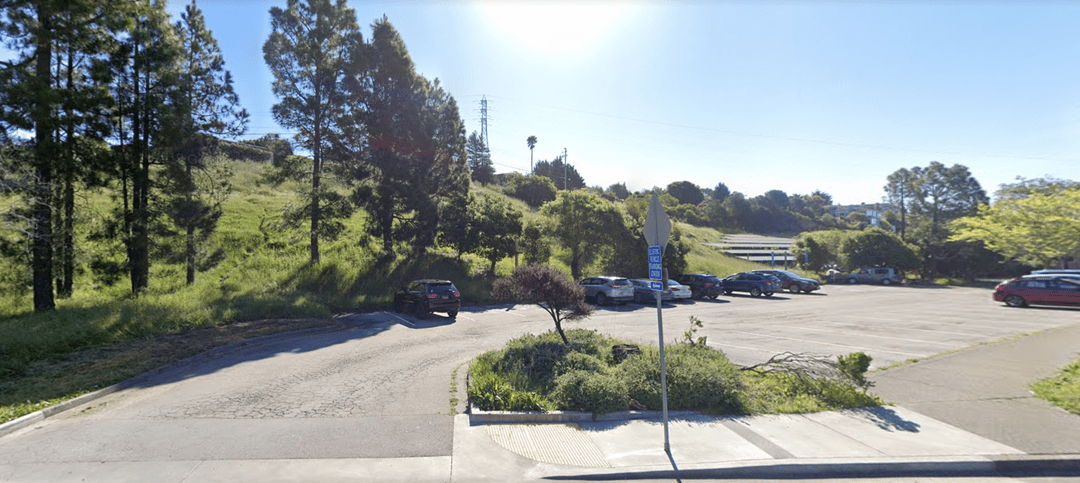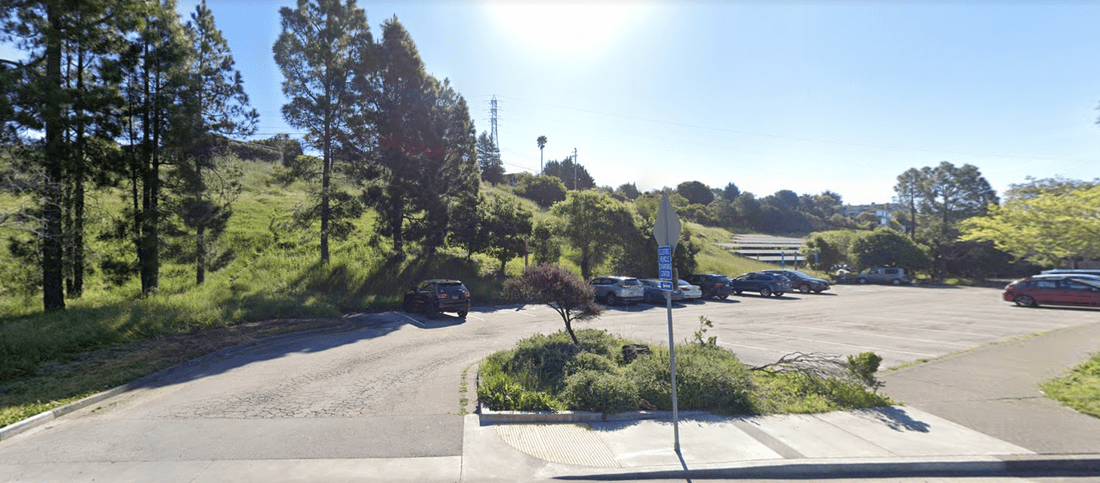The RFQ is the latest effort in a process that got a jolt of adrenaline at the city’s Affordable Housing Summit in 2017, followed by the creation of a work plan in November 2019 to identify general characteristics of possible city-owned housing sites and preliminary financing options. That effort identified 71 parcels, but the vast majority were “undersized, sloped and in heavily wooded, forested areas. The quality of most of the parcels is not great,” Staude said.
Senior Planner Danielle Staude and housing consultant Janet Smith-Heimer kicked off the meeting with a presentation, laying out the “housing affordability gap” for those who work here but cannot afford to live here: “Currently an attainable level of rent for employees such as store clerks, teachers and physical therapists is in the range of $1,700 a month while the average market-rate, 2-bedroom unit in Mill Valley averages $2,700 a month to rent.”
“That results in a disconnect in our community,” Staude said. “We have a large proportion of people who work here and leave Mill Valley at 5pm, and their kids don’t likely go to school here, they don’t contribute to social activities or volunteer in the community.”
More than four hours of vigorous discussion about the proposal made it clear that the debate was largely predicated on the lens through which you viewed the issue. In addition to the more than 550 comments submitted in advance to the city, as well as petitions both for and against the proposal, residents turned out in droves to be heard on the proposal.
For those who were moved by the global movement around racial equity and want to hold City of Mill Valley officials accountable to continue making headway on diversity, equity and inclusion initiatives, as well as those who’d like to have more people who work here contributing to the local economic, community vitality and school district enrollment, addressing the lack of affordable housing in our community is viewed as a critically important step toward redressing inequity.
Teresa Rea, a resident, land planner and board member of the Mill Valley Chamber, spoke to the big picture: “The DEI Task Force was formed as we as a community painfully recognized that we have not been fair. We cannot just keep talking about being open minded and never demonstrate that we are. Here is our chance. We need to show some heart and create opportunities for other fine people who could not afford to buy one of these $2 million houses.”
“Much of what’s happening is a strong, adverse reaction to change,” said local resident Veronica Wilson. “For neighbors that are worried about ‘community character,’ what does that mean to people? I am interested in changing the character of our town for the better. Why not share it with more people?”
District 3 Supervisor and former Mill Valley Mayor Stephanie Moulton-Peters also weighed in: “Mill Valley is a community that builds affordable housing and we have many examples in town. Every neighborhood should contribute to affordable housing. I would offer up my Blithedale Canyon neighborhood. We are not a complete community anymore. We are in a time warp. We don’t have the people who need to be living here. I support this project.”
For residents of the Enchanted Knolls neighborhood located closest to the proposed site, as well as areas nearby, their consensus was that the development was too large, too negatively impactful on traffic and parking and that the process was moving too quickly for residents who want more time to study it.
“This community needs more time and more clarity and it needs a lot less stress at the end of 16-month pandemic, especially as we head into the middle of a fire season and drought and (Public Safety Power Shutoffs),” Eucalyptus Knoll resident Barbara Lenahan said.
“This puts us in a position to be against affordable housing if we are against this one location,” said Shelley Drive resident Colleen Chelini. “We already have a lot of high-density affordable housing in this neighborhood. The community deserves the opportunity to review all the options.”
Fellow Shelley Drive resident and affordable housing advocate David Levin said he strongly believes that “this is a good site for the housing we need to address this affordable housing crisis. This should fit well.”
There was plenty of overlap between those groups, of course, as many residents near the proposed site said they support affordable housing but wanted to see it spread more evenly across the community. City officials remained steadfast that while they have already implemented housing initiatives like accessory dwelling units (ADUs), which have created an average of 20 units around the city each year, and the Covia “House Mill Valley” home share program throughout town, there is much more to do. They noted that other potential sites in places like Boyle Park and the Edgewood Reservoir could also be explored, but that the 1 Hamilton Drive proposal remained the best opportunity to build something that will make a difference.
After more than two hours of public comment, councilmembers urged the community on all sides of the issue to understand that the decision at hand was the first step of many. Smith-Heimer noted that the project, if all goes according to plan, wouldn’t likely open until at least 2025.
Carmel pushed back on the idea that “the train has left the station and there’s nothing left to be done here – that is not where we are. We are trying to make the right assessment whether this will work on this site. We have to engage with a development partner to see if this will fit with the surrounding environment. We want it to integrate well. We do not want to have an us and them feel in this neighborhood.”
“The site needs to be able to park all of the cars, and we will enhance parking at the park,” Carmel added. “There will be a traffic study to make sure it does not make traffic worse. Everyone thinks affordable housing is going to have a high impact on traffic and it does not,” pointing to examples like Tam Ridge in Corte Madera and Pickleweed apartments in Mill Valley
Tam Ridge, which he said have had a negligent impact on traffic in those locations.
“I don’t think these other sites are off the table – there are other sites worth looking at,” he added. “If we are successful here we can copy this process and bring it to other parts of our town.”
“A good developer will have a track record with dealing with these kinds of questions,” Mayor John McCauley added.
City officials and Smith-Heimer laid out a number of data points. Here’s a summary:
- Possible sites are significantly limited in places like Miller Avenue and elsewhere because they are within the floodplain and near floodways, a special FEMA designation that prevents, or at the very least largely restricts, building in those areas. That eliminates a lot of city-owned sites as options.
- City officials arrived at 40 units as a minimum after interviewing a number of active nonprofit developers in Bay Area. “We’re looking at what is the minimum that would attract a nonprofit develop of this kind of housing,” Smith-Heimer said.
- A common financial model for funding the development of affordable housing is via the Low-Income Housing Tax Credit (LIHTC), which subsidizes the acquisition, construction, and rehabilitation of affordable rental housing for low- and moderate-income tenants. “These function as equity investments,” Smith-Heimer said. “There’s no investor financial return but they get a tax credit write-off and apply them to what otherwise would be their tax liability.”
- Since the 1 Hamilton Drive site is close to many public facilities, including parks, the Community Center, schools, local transit, it would likely “score really well for tax credits,” she said.
- There are no known legal or jurisdictional constraints that would affect possible development review, though it would likely require an environmental review under the California Environmental Quality Act, as well as a wetlands review, among others.
- Despite the current drought conditions, the Marin Municipal Water District is discussing the possibility of allowing hookups for affordable housing projects.
- Specifically delineating the housing for workforce is possible, and the city would have the ability to create a lottery system that provides some preferences for the local workforce.
- There is a lot of work to do in developing detailed designs alongside the community, and developing the parking plan, and the developer partner would certainly understand that,” Heimer-Smith said, particularly in creating at least as many parking spots designated for Hauke Park users as there now.”
“We think this is a great opportunity to achieve the city’s goals,” Heimer-Smith said. “This is the right time and right approach. But without going forward with the RFQ, we don’t know if this is an opportunity or not.”



Trackbacks/Pingbacks